Southern Downs CrustaceanClam Shrimps
The Clam Shrimp (Paralimnadia urukhai) is a species that is endemic to the Granite Belt. Under the right environmental conditions, they are found in rock pools known as “gnammas”.
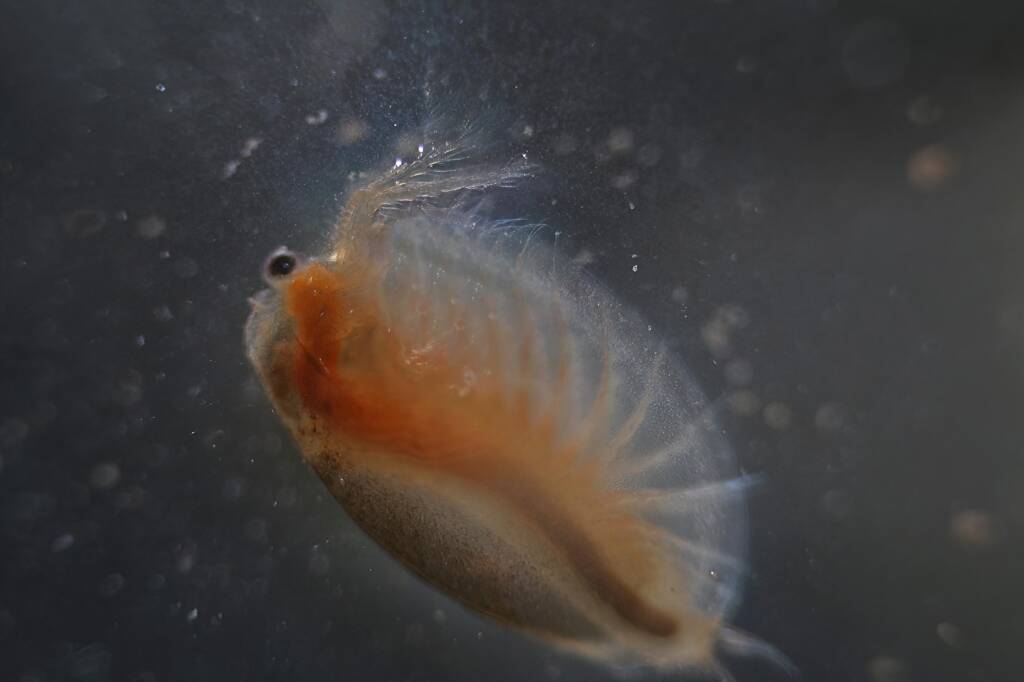
“Gnamma” is an Aboriginal name from Western Australia that is an accepted scientific term to describe depression and holes that occur in granite rocky outcrops and similar exposed rocky surfaces. These depressions can be large or small, deep or shallow and may contain a variety of wildlife. Another common term is “pan hole”.

My interest is in what are called “Pan Gnammas” — a flat bottom relatively shallow depression/hole — that fills with water after rain, but has sufficient volume for various wildlife species to go through a breeding cycle before the pool dries up.
I only had my macro lens with me, so I stitched two photos together. I am assisting a scientist who is doing research on clam shrimps (inter alia), in particular on growth rates and life cycle. Twelve days after rain (when the hatch was initiated), this gnamma had greater than 4,000 shrimps (Paralimnadia urukhai). They were about 2.5 mm in length (and very hard to see and count). The female clam shrimps can have >120 eggs at a time, and can lay up to 10 times. The eggs desiccate when the gnamma dries up, awaiting the next rains to hatch.
The group of gnammas (pictured above) are within 300 meters of the following photo. Some of these gnammao have shrimp, whilst others were too shallow to have a sufficiently long wet period for the life cycle required for the clam shrimps.
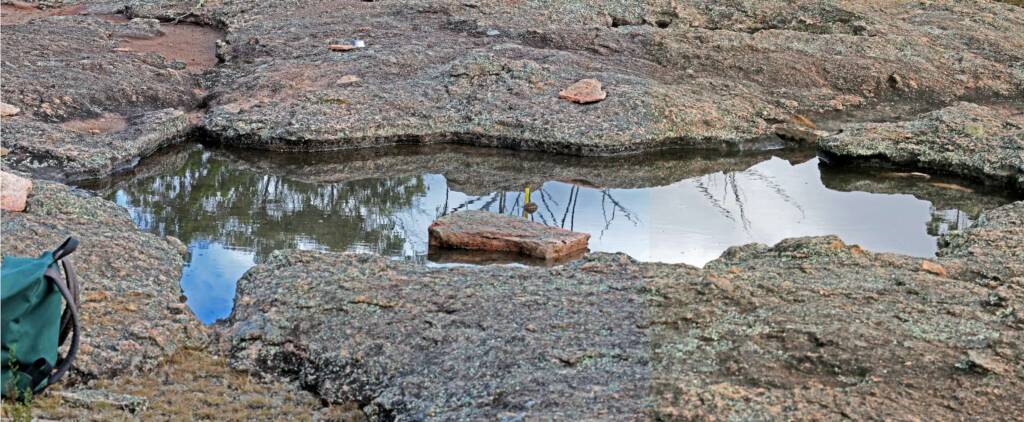
In the middle of this pool, you can see the yellow measurement scale we used, so we could check on the evaporation rates.

On day 7 after rain, the average length of the juvenile clam shrimps was 1.3 mm.
I have been refining the measuring system and use a vernier calipers for the main scale and use CAD to divide each mm into ten. The yellow background I found to be less suitable than black.

Measurement of a shrimp showing a 3 mm length and using a darker background.

A mate guarding pair. The eggs can be seen in the female (on the right). Using an earlier measuring system, the male measures 5.5 mm.
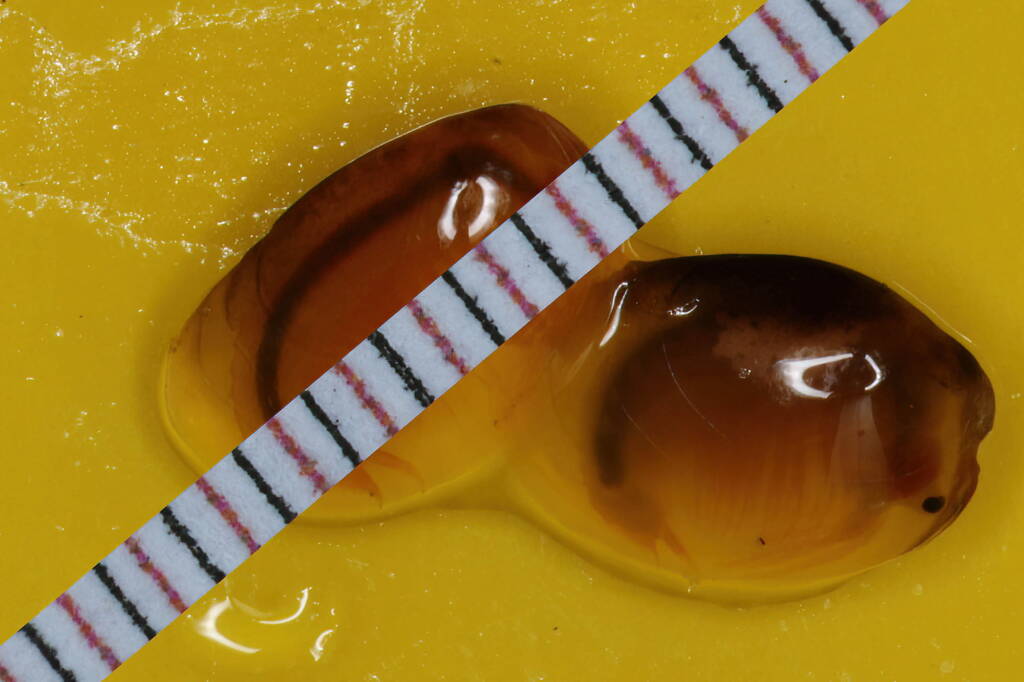
This adult Clam Shrimp (Paralimnadia urukhai) is 7.6 mm, using an even earlier system of measurement.
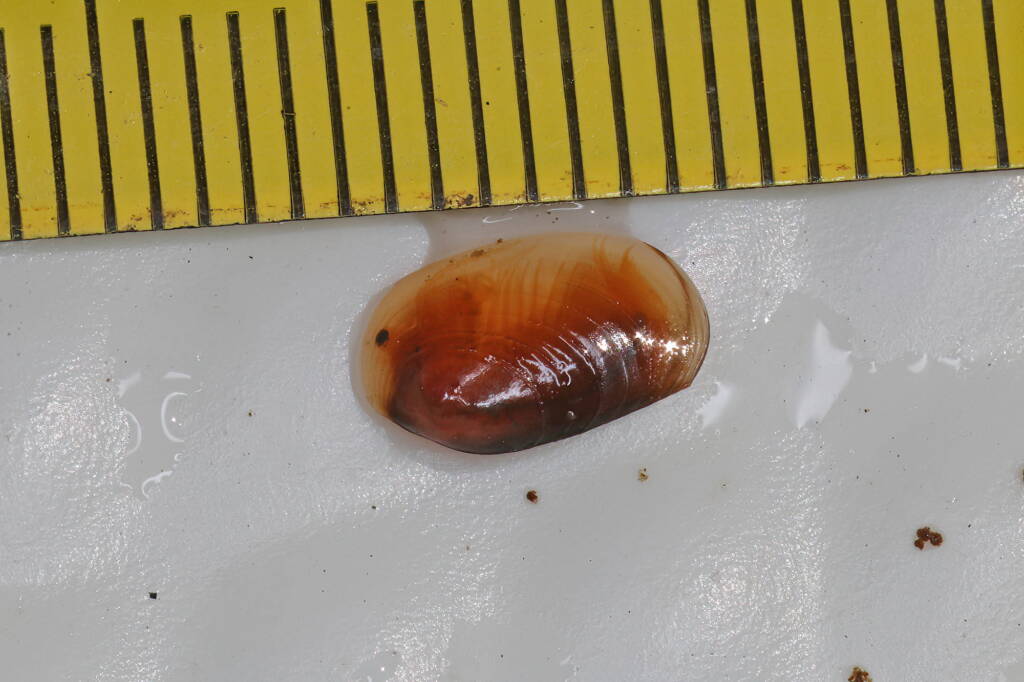
For the measuring scales, I use Turbocad to draw the number of lines required then saved the drawing as a jpg. Using photoshop copied a section of that image to a photo of the vernier caliper scale (taken at 1:1 with Raynox), then stretched to fit exactly on the vernier scale.
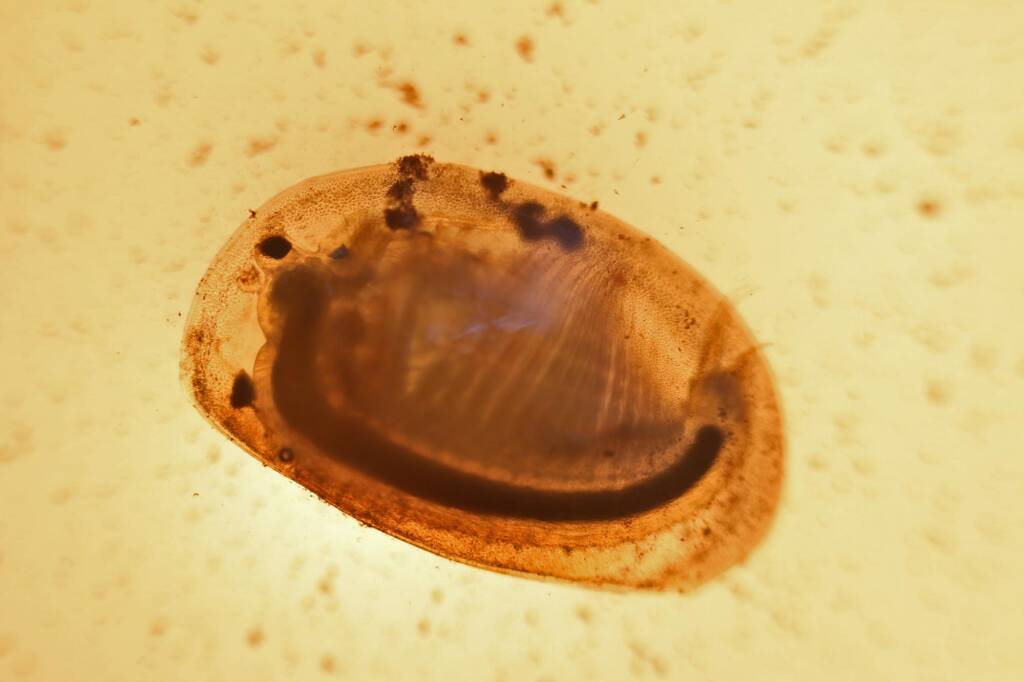
In the following photo (from my 2016 archive), you can see the mating stage known as “Mate Guarding Eggs”. You can see the eggs in the female (bottom) shrimp.
The gnamma had dried up on the 12th October. It then rained on the 13th, initiating the hatching process from eggs in the gnamma. The entire process from egg to the “Mate Guarding” (pictured below) was about 18 days.
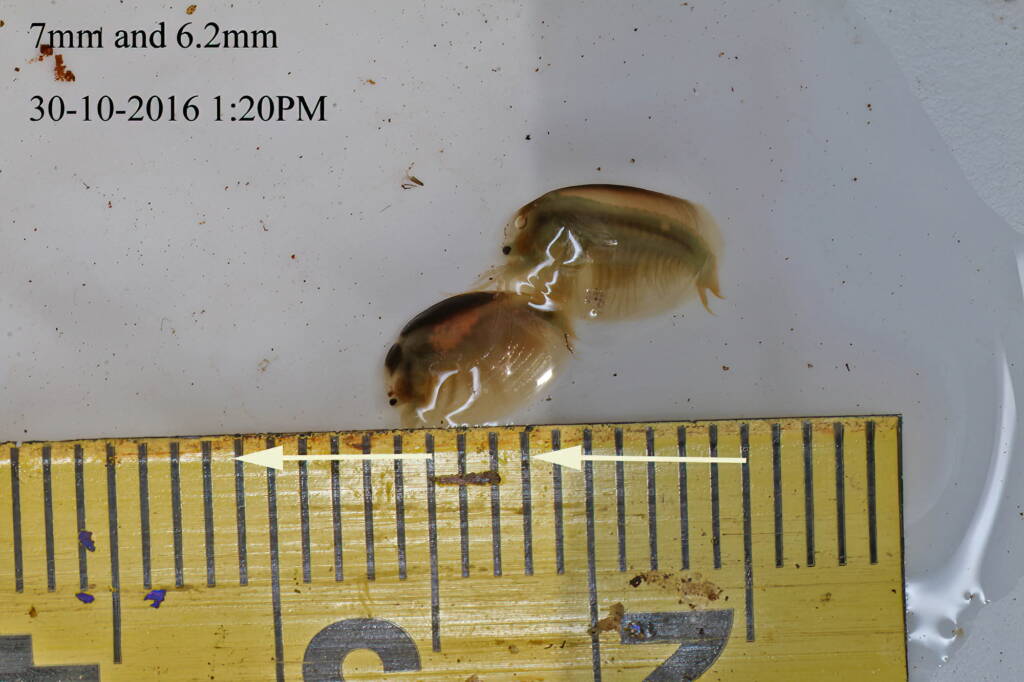
These Clam Shrimp (Paralimnadia urukhai) in gnamma are up to 8 mm long. They practice a thing called “mate guarding”, where the male attaches to the female and they swim around together for perhaps 24 hours, basically so no other male can get to her.

Sometimes, it is not always plain sailing. Picture here, there are possibly 4 males all interested in one lady…. melee. Also visible is one flatworm with an egg.
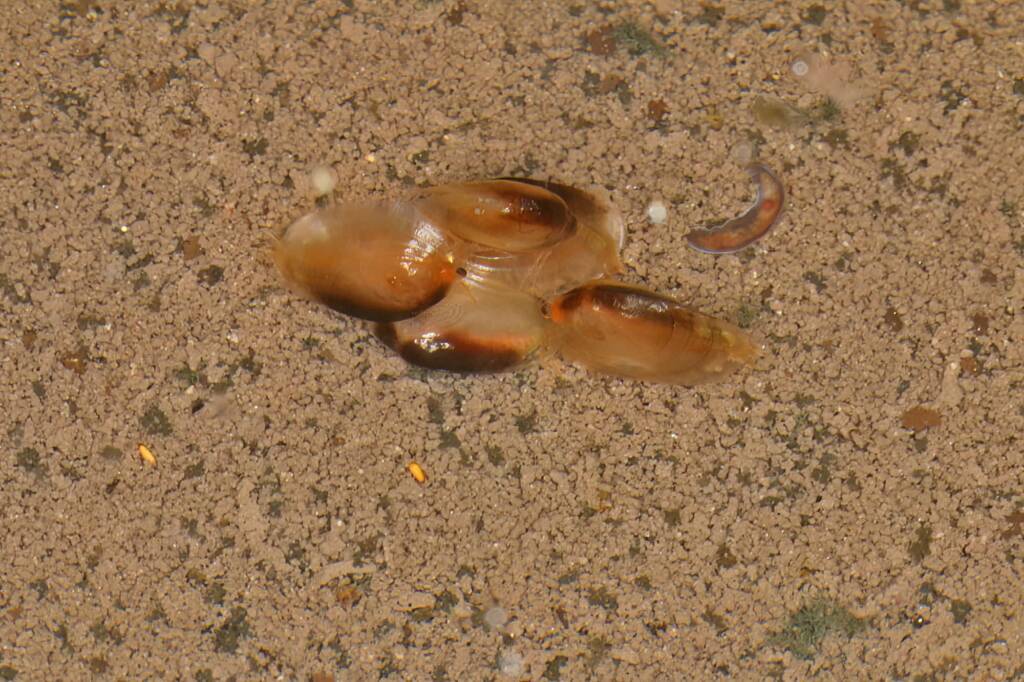
Checkout the blogs by Marc Newman on Gnammas in the Granite Belt and the life found within them, including Clam Shrimps.
- Scientific classification
- Kingdom: Animalia
- Phylum: Arthropoda
- Subphylum: Crustacea
- Class: Branchiopoda
- Subclass: Phyllopoda
- Order: Diplostraca
- Suborder: Spinicaudata
- Family: Limnadiidae
- Genus: Paralimnadia
- Species: Paralimnadia urukhai
Footnote & References
- Photographs & text © Marc Newman, Flickr
- A redescription of Paralimnadia urukhai Webb and Bell 1979 with the description of a new species P. minyspinosa (Crustacea: Branchiopoda: Limnadiidae), by Brian V Timms, Martin Schwentner, 16 March 2020, https://openjournals.library.sydney.edu.au/LIN/article/view/14313/12783
Southern Downs CrustaceanClam Shrimps
Southern Downs QLDSouthern Downs Fauna Southern Downs Bees Southern Downs Birds Southern Downs Crustacean Southern Downs Frogs Southern Downs Insects Southern Downs Marsupials Southern Downs Reptiles Southern Downs Spiders
QueenslandGold Coast Region Lamington National Park Southern Downs QLD
